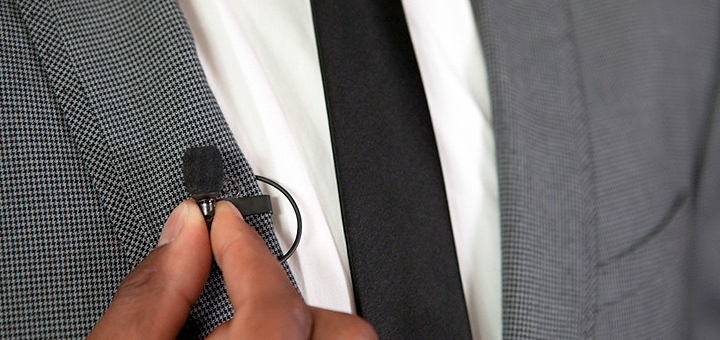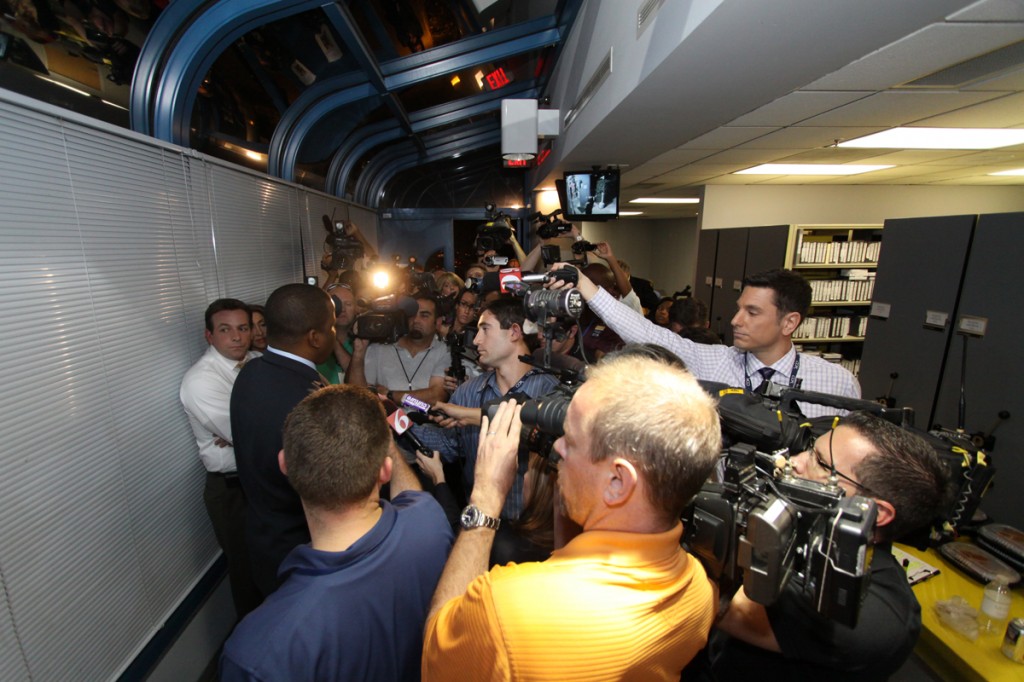

If you work in television news, you know all about budget cuts. Actually, if you work in any industry, you may have noticed the effects of slimmer budgets at some point.
In TV News, there are certain things that crews go ‘without’ when times are tough and the belt is tightened. Vending machines, reporter notebooks, Sharpies, free company Polo shirts…the list is long. Some things taken away are simply convenience. Others are tools desperately needed. Quality, wireless microphones (that actually work), fit this category.
Quality wireless microphones disappearing
In my experience, only one station in the last four had photographers who carried adequate wireless microphones. In fairness, it could be due to budget cuts, overuse, wear and tear, or simply fault or lack of care by the photographers themselves.
But how good is a television news story without good audio? Not too. I believe in order to make a TV news story compelling and creative, reporters need to ‘cut the cord’ and use wireless microphones so they can move around and show and tell what’s happening.
And if you’re a television news viewer watching a story and notice the voice of someone being interviewed sounds ‘tinny’ and the audio is awful, well, that’s because it’s recorded from the camera microphone – either by mistake, usually unbeknownst to the reporter and photographer. If the interviewee was wearing a wireless microphone in this case, many times the battery died or the signal was weak. Sometimes even a few feet is too much to ask for a clear signal for these aging, abused wireless microphones currently in the bags of TV news photographers cranking out stories across the country.
Lav microphone for iPhone the solution?
My girlfriend Tara recently came across a tweet from a tech company mentioning another company stepping up the game for wireless microphone options. It’s a simple concept: plug a high-quality, great sounding lavalier microphone right into your iPhone. It’s called, appropriately, smartlav by Rode Microphones. It claims to work well with Android phones and other devices with the standard microphone jack as well.
[nggallery id=3]Full disclosure: I have not tested this microphone. But if it does what it claims, I feel like this could be a major solution for TV stations around the country for three reasons:
[list type=”plus”] [li]This could actually replace worn out wireless microphones used today. It would require adding the audio track down separately with video during editing, but that may be a good enough tradeoff for quality audio each and every shoot.[/li] [li]This could be an excellent ‘safety valve’ in the event audio from the wireless or wired mike connected to the camera fails. Again, if you’ve worked in TV News, this more than likely has happened to you.[/li] [li]Many times big events, crowded interviews, podiums and other situations where several TV crews are the same area, wireless audio feeds can fail due to frequency problems. Sometimes the same or similar frequencies interfere with each other. The resulting audio is not good. A smartlav would solve this problem instantly.[/li] [/list]Reporters could even invest in one of these microphones as an insurance policy for their shoots. Don’t need to use the audio? No problem. Delete it from the iPhone.
Remaining questions: How good is the audio? How much space will it take up? How difficult is it to import into the several editing software programs used by TV stations?
Tips for using the smartlav microphone
Features of the smartlav lav for iphone
We already know it’s compatible with several devices that use the simple audio jack known as TRSS. There are many other great features as well:
- Overview. The smartLav is a professional-grade wearable microphone designed for use in a wide range of applications, from the boardroom to the pulpit, the car to the classroom.
- Connection. The RØDE smartLav uses a standard TRRS connection, which plugs directly into your smartphone or tablet’s headset input. Compatible with the iPhone®, iPad® and iPod® touch, in addition to a wide range of TRRS devices.
- Omni-directional. By employing an omni-directional capsule that picks up sound equally from all around the microphone, the smartLav can be mounted in a variety of positions and orientations on the subject.
-
Accessories. The smartLav is supplied with a foam pop shield to minimise wind noise and vocal ‘plosives’ (hard ‘b’, ‘t’ and ‘p’ sounds), as well as a durable mounting clip with in-built cable management.
-
Apple iOS or Android. The smartLav is fully compatible with the iPhone 5, iPhone 4S, iPhone 4, iPhone 3GS, iPhone 3G, iPad (3rd and 4th generation), iPad 2, iPad, iPad mini, iPod touch (1st generation through 5th generation).
- RØDE Rec app. The smartLav works with any audio app that accepts input from the headset connection, however it has been designed to pair perfectly with RØDE’s RØDE Rec app for Apple iOS. RØDE Rec turns your iOS device into a fully-featured field recorder, with a wide range of equalisation presets to suit various recording situations.
Where can I get one?
You can buy the smartlav right from Rode’s website. I just ordered one and I’m excited to give a full review once I’ve used it a few times.
If you’re interested in other lavalier microphones there are many affordable models on the market.
